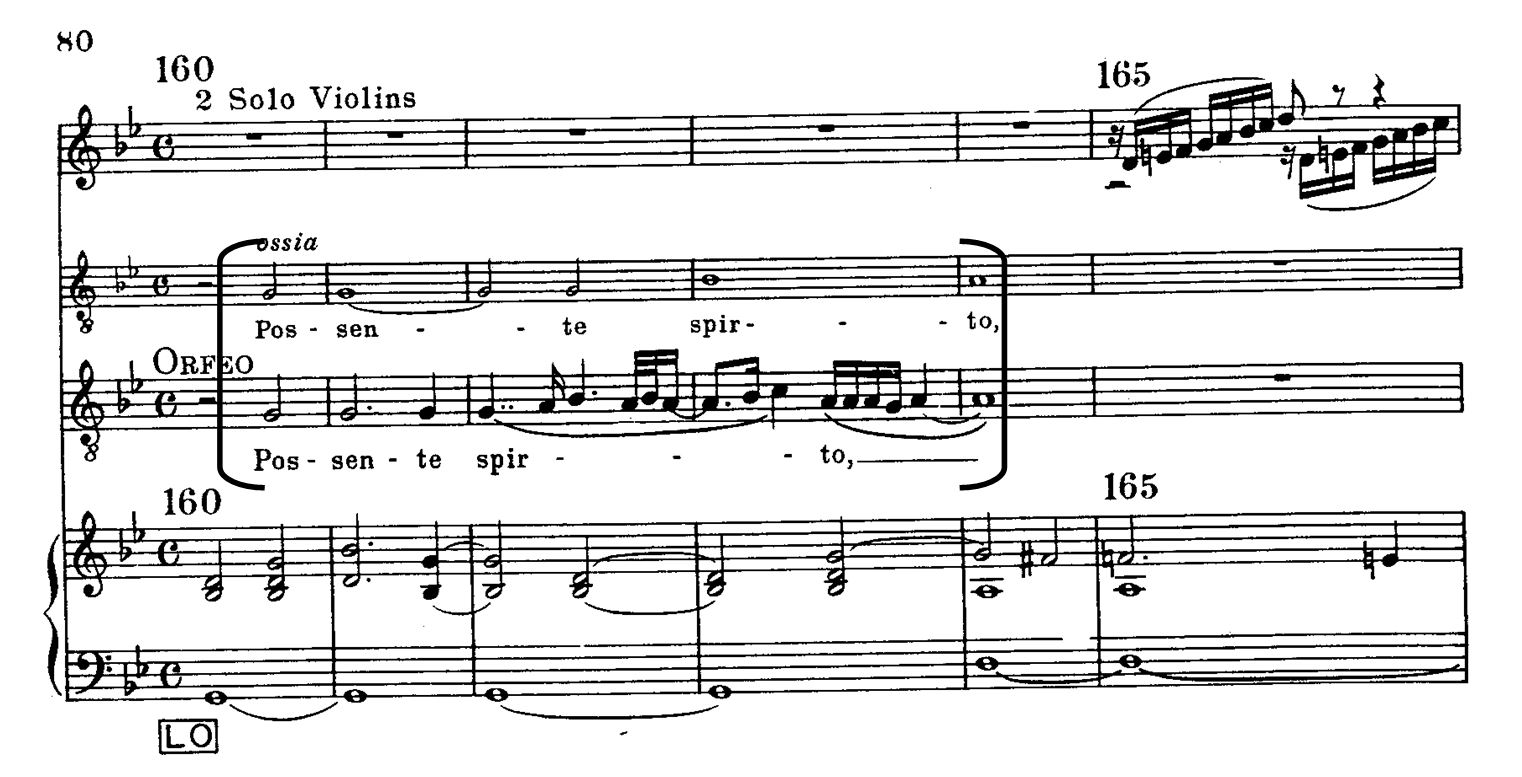Incorporating music examples
How to integrate music examples in your writing.
Presentation of music examples
Any music examples that you use in your work should be integral to your argument, and you should discuss what the example illustrates in the body of your text.
You need to include enough of the excerpt of music to create a context for your discussion, but only select the amount you need rather than including scores of entire works.
If the example is relatively short, it can appear in the body of the essay immediately after the paragraph that discusses it, so readers can refer to it easily. If you need to include a larger excerpt, for example more than a whole page, it may be more appropriate to include it in an appendix at the end of your essay.
The example from a student essay below includes:
- A paragraph that discusses the point the example illustrates.
- An image of the music example below the paragraph that discusses it.
- Annotations on the music to help identify the features the student mentions.
Student Example
Monteverdi also used ornamentation to make his works more expressive. Caccini had already published Le nuove musiche, advocating, amongst other things, the use of ornamentation to better convey the meaning of the text, rather than to demonstrate the singer’s ability.6 Monteverdi, however, went further, specifying exactly how his music could be ornamented. In Possente spirto, from Act III of Orfeo, Monteverdi wrote two vocal lines, one with no ornamentation and the other highly decorated (Example 1). This innovation is noteworthy in that it prevents the music from being rendered less expressive by virtuoso singers wanting to display their skill with little regard for the text.
Example 1: Possente Spirto from Orfeo, Act III, Bars 160‐165 7

6 Burkholder, et al., 312.
7 Claudio Monteverdi, L’Orfeo: favola in musica, ed. Denis Stevens (Borough Green, Sevenoaks, Kent: Novello, 1968), 80.
Referencing
The example above follows Chicago A (Footnote and Bibliography) style, which includes:
- A caption above the example with an example number (‘Example 1’), the composer’s name, the title of the work, the movement, and the bar numbers.
- Clefs, key and time signatures, instrumentation and bar numbers in the image of the music example.
- Footnotes providing the source details at the bottom of the page.
Refer to Re:cite (https://library.unimelb.edu.au/recite) to check for other requirements of Chicago A style, such as writing the bibliography entries for music examples, or for the requirements of other referencing styles.
Sourcing music examples
Sourcing examples from complete scores or collected editions is preferable to using extracts from books or articles. If you use an example from a secondary source, make sure you cite the source according to your chosen citation style.
For help sourcing music examples, refer to:
Alternatives to music examples
Sometimes a diagram or chart may be more illustrative than an image of bars of music when noting features such as the changes of key in a movement or outlining the structure of a work. The table below, taken from a student’s thesis, follows a discussion about the use of particular rhythmic motive in a composer’s work.
| Section | Bars | Key | Effects |
|---|---|---|---|
| Intro | 1-10 | C Major - I | Habanera rhythm, popular theme |
| Theme | 1-41 (30 bars) | I | Triplets at end of phrases and cross rhythms fragmented habanera rhythm |
| Interlude | 42-47 (6 bars) | I | Habanera rhythm |
| Var 1 | 48-78 (30 bars) | I | Fragmented habanera rhythm |
| Interlude | 79-80 (6 bars) | I | Habanera rhythm, popular theme |
| Var 2 | 81-111 (30 bars | I | No habanera rhythm, melismatic phrases, comprised of triplets |
| Coda | 112-126 (15 bars) | I | Habanera rhythm, some cross rhythms in vocal line |
Angeline Brasier, ‘Pauline Viardot: Her Music and the Spanish Influence’ MA thesis, Melbourne 2000, 65.
Foreign language terms
Foreign language terms, for example titles of works, should be italicised.
Examples:
Caccini had already published Le nuove musiche, …
In Possente spirto, from Act III of Orfeo, Monteverdi wrote two vocal lines …
Final tip
To enhance the quality of your writing, it is just as important to discuss the music examples you include to illustrate your points as it is to select relevant extracts of music.

Looking for one-on-one advice?
Get tailored advice from an Academic Skills Adviser by booking an Individual appointment, or get quick feedback from one of our Academic Writing Mentors via email through our Writing advice service.